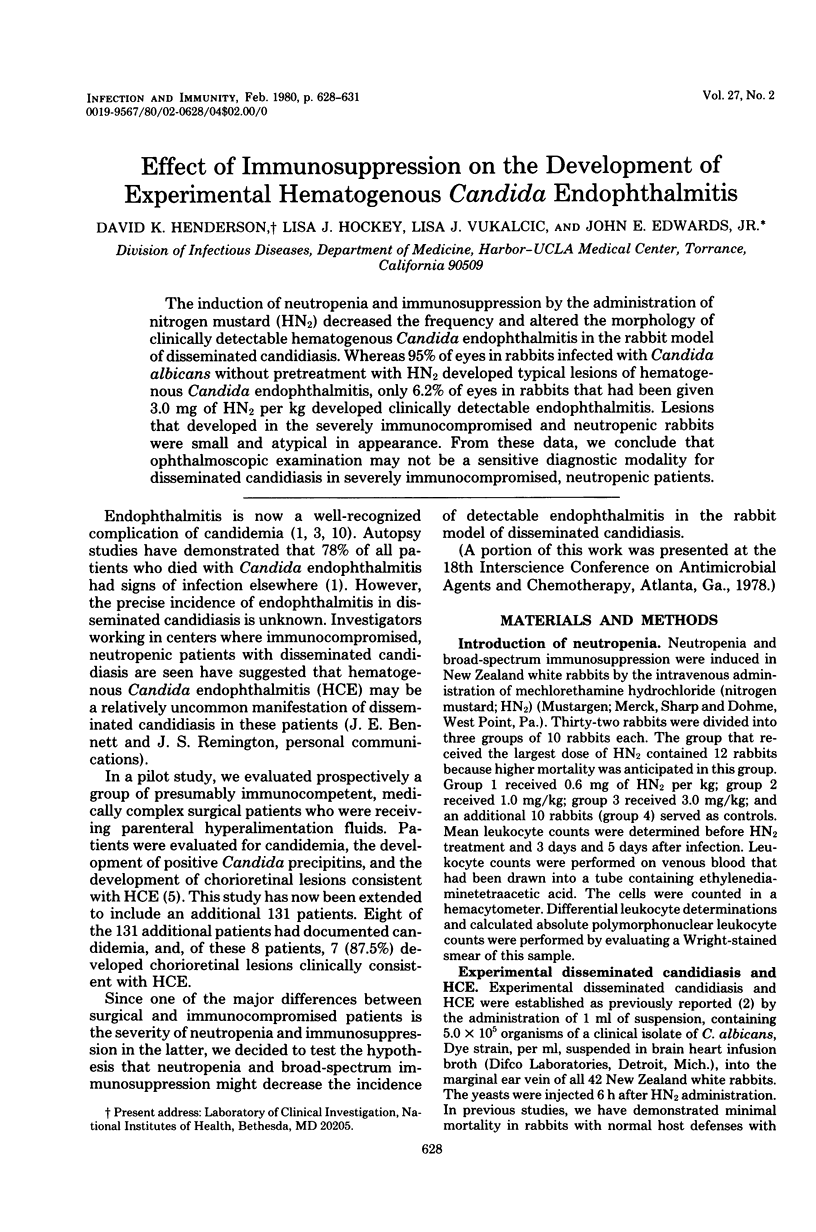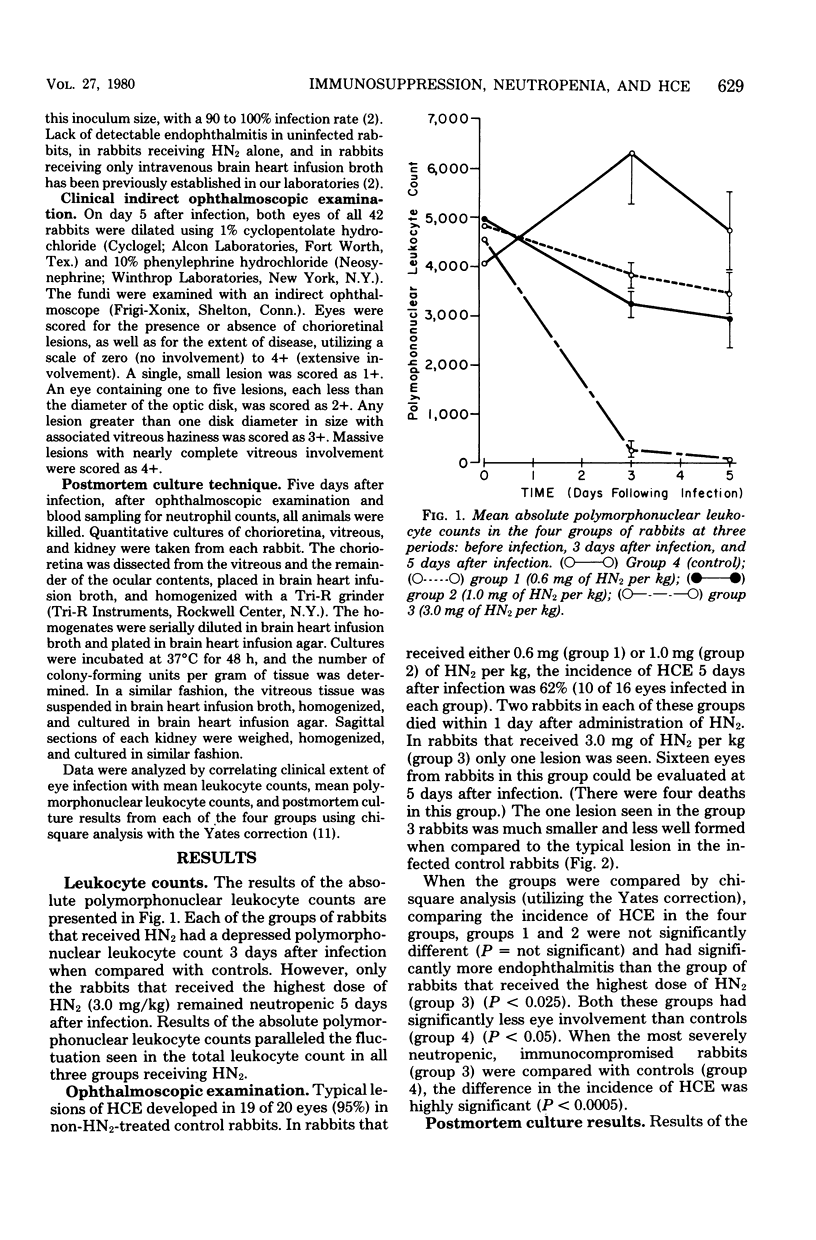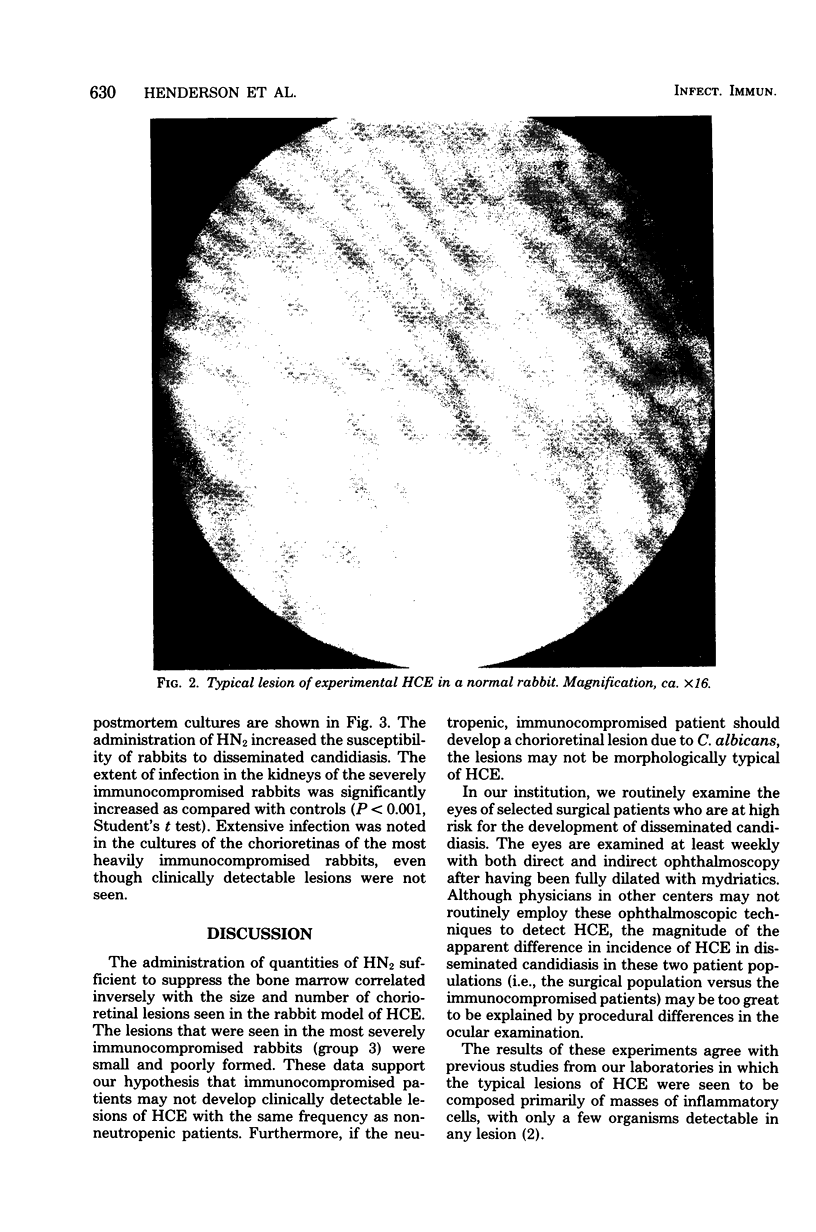Abstract
The induction of neutropenia and immunosuppression by the administration of nitrogen mustard (HN2) decreased the frequency and altered the morphology of clinically detectable hematogenous Candida endophthalmitis in the rabbit model of disseminated candidiasis. Whereas 95% of eyes in rabbits infected with Candida albicans without pretreatment with HN2 developed typical lesions of hematogenous Candida endophthalmitis, only 6.2% of eyes in rabbits that had been given 3.0 mg of HN2 per kg developed clinically detectable endophthalmitis. Lesions that developed in the severely immunocompromised and neutropenic rabbits were small and atypical in appearance. From these data, we conclude that ophthalmoscopic examination may not be a sensitive diagnostic modality for disseminated candidiasis in severely immunocompromised, neutropenic patients.
Full text
PDF



Images in this article
Selected References
These references are in PubMed. This may not be the complete list of references from this article.
- Edwards J. E., Jr, Foos R. Y., Montgomerie J. Z., Guze L. B. Ocular manifestations of Candida septicemia: review of seventy-six cases of hematogenous Candida endophthalmitis. Medicine (Baltimore) 1974 Jan;53(1):47–75. doi: 10.1097/00005792-197401000-00002. [DOI] [PubMed] [Google Scholar]
- Fishman L. S., Griffin J. R., Sapico F. L., Hecht R. Hematogenous Candida endophthalmitis--a complication of candidemia. N Engl J Med. 1972 Mar 30;286(13):675–681. doi: 10.1056/NEJM197203302861301. [DOI] [PubMed] [Google Scholar]
- Levine A. S., Graw R. G., Jr, Young R. C. Management of infections in patients with leukemia and lymphoma: current concepts and experimental approaches. Semin Hematol. 1972 Apr;9(2):141–179. [PubMed] [Google Scholar]
- Montgomerie J. Z., Edwards J. E., Jr Association of infection due to Candida albicans with intravenous hyperalimentation. J Infect Dis. 1978 Feb;137(2):197–201. doi: 10.1093/infdis/137.2.197. [DOI] [PubMed] [Google Scholar]
- Schimpff S. C., Wiernik P. H., Block J. B. Rectal abscesses in cancer patients. Lancet. 1972 Oct 21;2(7782):844–847. doi: 10.1016/s0140-6736(72)92210-6. [DOI] [PubMed] [Google Scholar]
- Sickles E. A., Greene W. H., Wiernik P. H. Clinical presentation of infection in granulocytopenic patients. Arch Intern Med. 1975 May;135(5):715–719. [PubMed] [Google Scholar]
- Valdivieso M. Bacterial infection in haematological diseases. Clin Haematol. 1976 Jun;5(2):229–248. [PubMed] [Google Scholar]
- Weinstein A. J., Johnson E. H., Moellering R. C., Jr Candida endophthalmitis. A complication of candidemia. Arch Intern Med. 1973 Nov;132(5):749–752. [PubMed] [Google Scholar]



